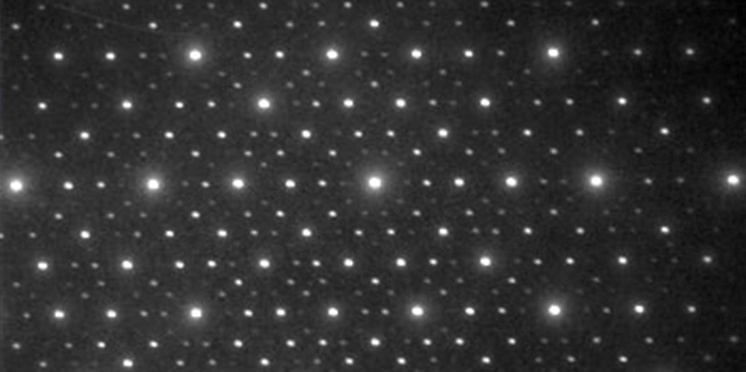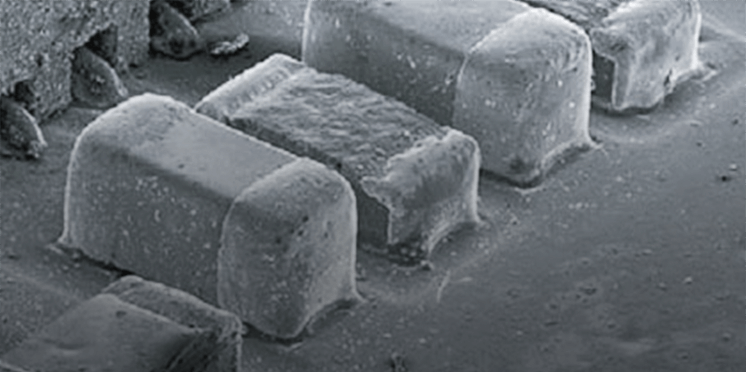電子染色
電子染色
electron staining
[目次:試料等(試料および試料作製)]
TEM像のコントラストの増感を行うために、電子線の散乱能が低い軽元素で構成されている生体試料や高分子材料に対し、散乱能の高い重金属を吸着させること。
生体試料を観察する場合、タンパク質などにウランや鉛を吸着させる。またポリプロピレンやポリエチレンのような結晶構造と非晶質が存在する高分子の場合、四酸化ルテニウムが非晶質にのみ侵入することを利用して、ルテニウムを非晶質部分に吸着させる。このようにして特定の部分に吸着させた重金属が電子線を散乱することにより、TEM像のコントラストを増感させる。
Electron staining means to adsorb heavy metals of a high scattering power to biological specimens or polymer materials composed of light elements which exhibit a small scattering power for electrons, for enhancing the TEM image contrast of these specimens.
When observing a biological specimen, uranium or lead is adsorbed to proteins, etc., in the specimen. For a specimen of polymers (e.g. polypropylene, polyethylene) consisting of crystalline and amorphous states, ruthenium can be selectively adsorbed to the amorphous regions because ruthenium tetroxide enters only to the amorphous regions. Those heavy metals which strongly scatter incident electrons give rise to enhancement of the image contrast.
関連用語から探す
説明に「電子染色」が含まれている用語






